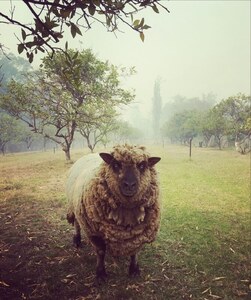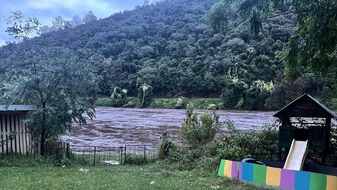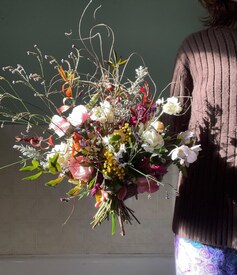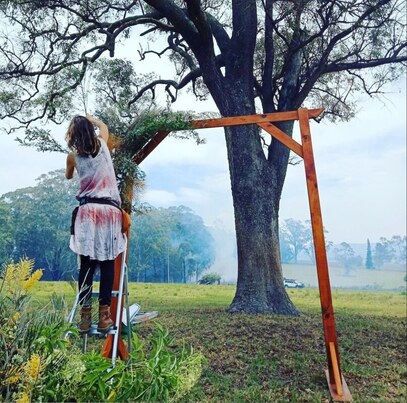|
We grow flowers for weddings so we are pretty keen weather watchers at the best of times, but especially during harvest/wedding week. Whilst rain is wonderful for plants, it can be detrimental to near full flowering blooms that I wish to use in our arrangements. Harvesting the flowers at the right bloom stage and as close to the event as possible is key. Knowing the potential weather impacts is hugely beneficial. A little note on wind – wind is the worst! In 2019/20 we experienced the dry and the fires. We were getting water trucked in for home use and for water for our animals. The grass was crispy underfoot and our beautiful river was near empty – stagnant and green. Having weddings booked around that time was an added worry. Our plants were fending for themselves. This was around the time that I formulated the idea for the Manning Valley Flower Collective. What a weight was lifted! Knowing people in our local community growing flowers who were prepared to cut and sell on to me, was a life changer. Whilst being able to stick with our ethos of local flowers for weddings, we didn’t have to sit with all that weight of responsibility solely on our gardens which is especially comforting during times of challenging weather. The accumulative efforts of our flower growers will always lead to local flowers being in the hands of people who want them as an accompaniment to their celebration. In 2021/22, we’re having another La Nina summer with above average rain. We plan to plant as much as we can, thinking ahead to the drier times which will inevitably come. Annuals can be water intensive for them to flower at full capacity. Well established perennials and shrubs on the other hand can get by with very little in dry times so I plan on future proofing our gardens by having a diverse range of flowering shrubs/natives/perennials and the idea is to get them established when rain/water is readily available – which according to all reports is now!
'The question is not what you look at but what you see' - Thoreau. We also need to train ourselves to 'see'. Environmental constraints sometimes force us to look at what is growing around us differently. We never guarantee the use of a specific flower variety as there can be so many variables outside of our control. When life gives you lemons make lemonade – when rain decimates your dahlia crop, look around you. We explain that we will use the best in bloom the week of a wedding. Beyond the flower look for the seedpods, the twisted stems, the grasses or the berries. You can use all manner of things in a design which are beautiful and can enhance an arrangement and be a showstopper unto themselves. Whilst at the same time being a beautiful mirror of the time and place you are living in.
For a climate resilient cut flower garden:
The long term impacts of what’s to come due to climate change is scary to think about especially after experiencing some of the predicted wild weather first hand over the last few years. All I know is that putting plants in the ground, especially the perennial types – is a great thing. Get your plants settled in with this rain and their resilience will see you and the planet through any trouble and strife down the way.
1 Comment
Stefanie Garland
1/25/2022 01:50:12 am
What an inspiring story Rachel, and a wonderful ethos, - to use what you can grow and source locally.' I love the quote 'The question is not what you look at but what you see'.
Reply
Leave a Reply. |
AuthorArchives
February 2023
Categories |






 RSS Feed
RSS Feed
